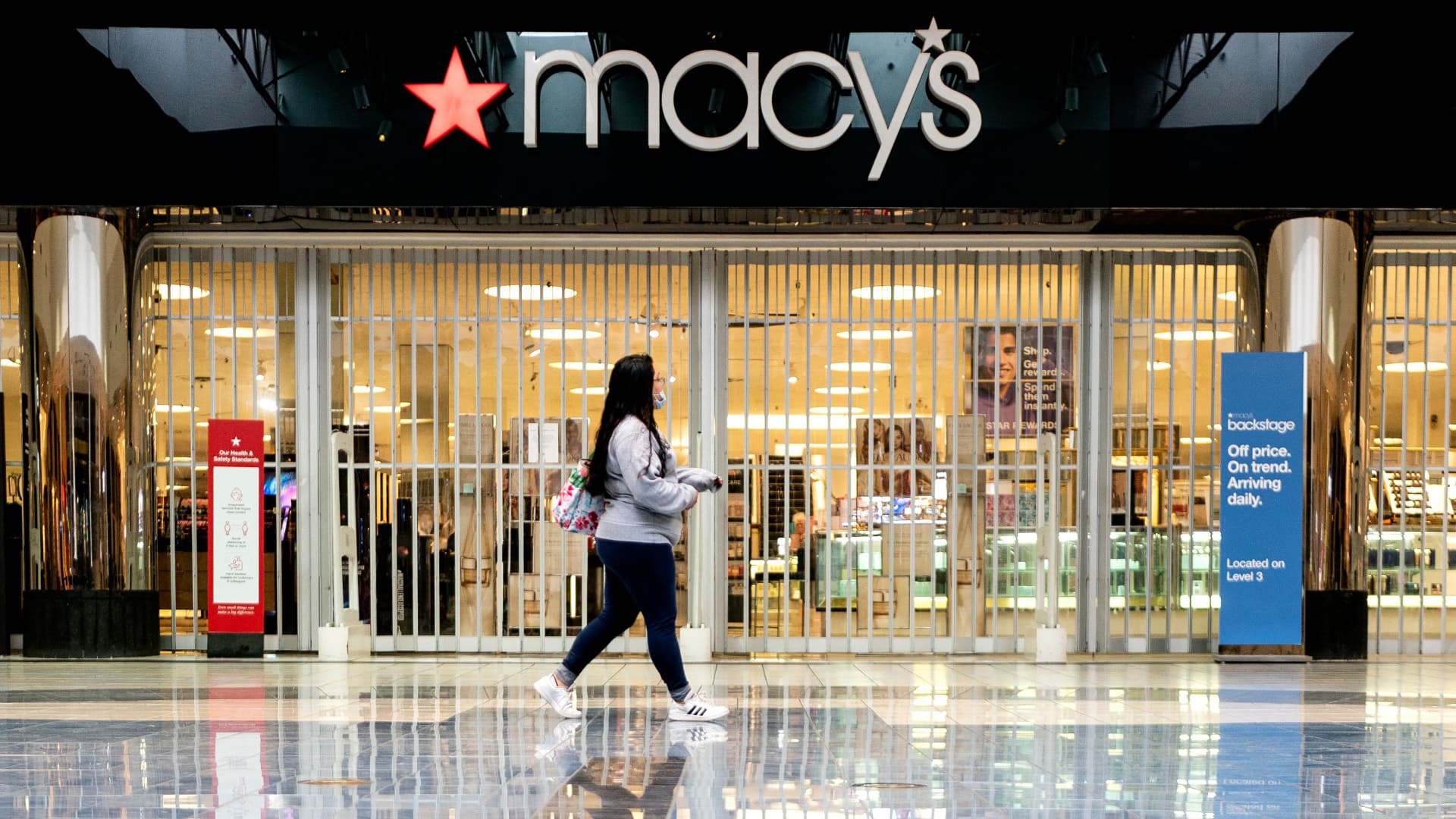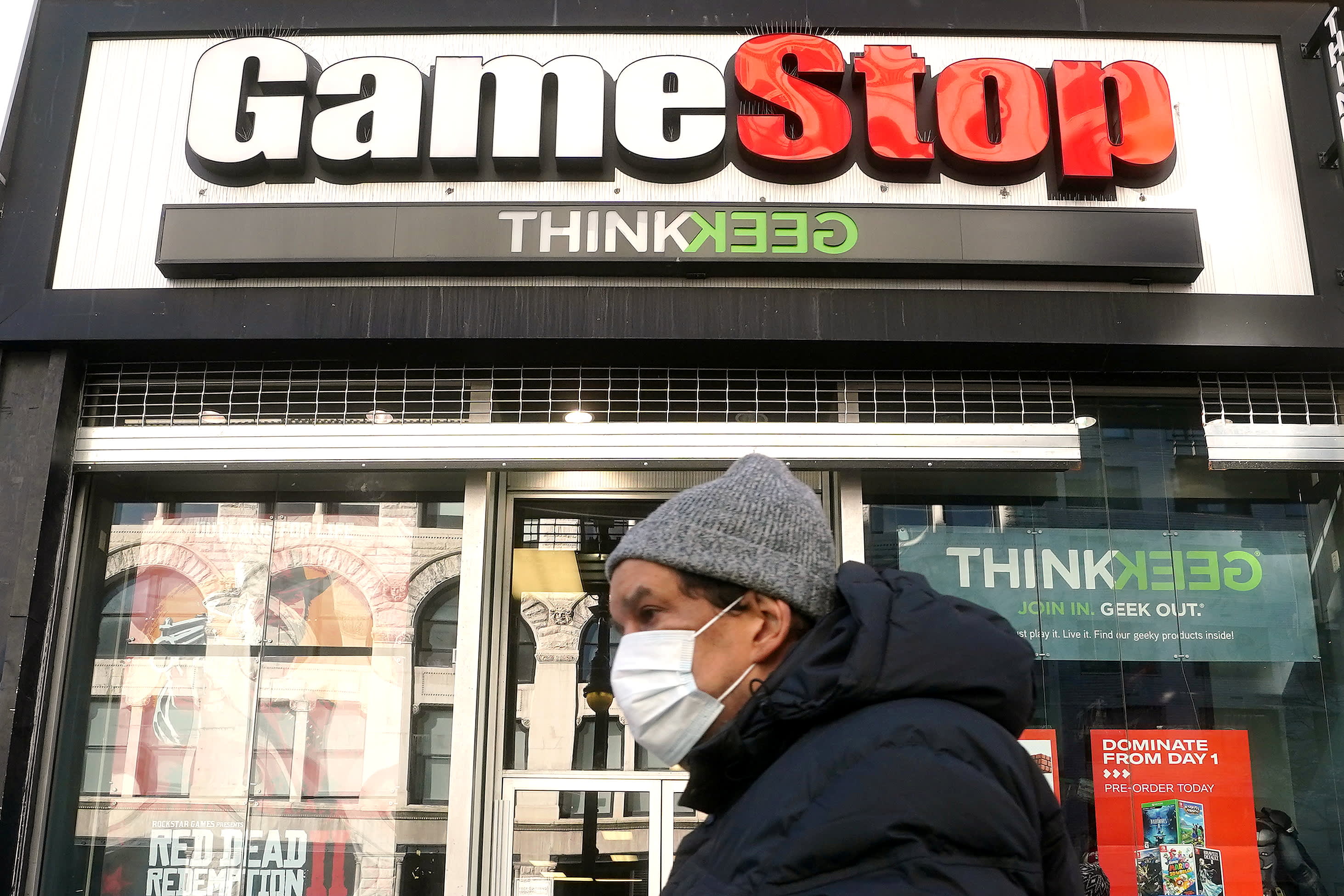Macy's stock surges as company raises 2022 profit outlook despite uncertain retail landscape
Macy's reaffirmed its fiscal 2022 sales outlook and raised its profit guidance, expecting stronger credit card revenue for the remainder of the year.

A person walks past a Macys store in Hyattsville, Maryland, on February 22, 2022.
Stefani Reynolds | AFP | Getty Images
Macy's on Thursday reported fiscal first-quarter profits and sales ahead of analysts' expectations, as shoppers returned to malls to shop for new outfits, luggage and luxury goods in spite of decades-high inflation that has threatened to curtail consumption.
The department store chain, which also owns Bloomingdale's, reaffirmed its fiscal 2022 sales outlook and raised its profit guidance, expecting stronger credit card revenue for the remainder of the year.
It joins Nordstrom in bucking a broader trend in the retail industry of downbeat forecasts and warnings of a consumer pullback on discretionary spending. In recent days, companies including Walmart, Target, Kohl's and Abercrombie & Fitch have cautioned that higher expenses on logistics and labor will continue to eat into their profits in the near term.
Macy's shares climbed around 13% in premarket trading on the news.
The retailer still expects 2022 revenue to be flat to up 1% compared with 2021 levels, which would be a range of $24.46 billion to $24.7 billion.
It now projects earnings, on an adjusted basis, between $4.53 and $4.95 per share, up from a prior range of $4.13 to $4.52 per share.
"While macroeconomic pressures on consumer spending increased during the quarter, our customers continued to shop," Chief Executive Officer Jeff Gennette said in a press release. He added that the company saw a shift among consumers back into stores and toward clothing for special occasions such as women's dresses and tailored men's items.
Here's how Macy's did in its fiscal first quarter compared with what Wall Street was anticipating, based on a survey of analysts by Refinitiv:
Earnings per share: $1.08 adjusted vs. 82 cents expectedRevenue: $5.35 billion vs. $5.33 billion expectedFor the three-month period ended April 30, Macy's reported net income of $286 million, or 98 cents per share, compared with net income of $103 million, or 32 cents a share, a year earlier.
Excluding one-time items, it earned $1.08 per share, topping analysts' expectations for adjusted earnings per share of 82 cents.
Revenue grew nearly 14% to $5.35 billion from $4.71 billion in the year-ago period, also topping analysts' forecast.
Digital sales climbed 2%, representing 33% of net sales for the quarter. The retailer said it had 44.4 million active customers, up 14% from the prior year, aided by Macy's loyalty program, which helped draw more people online and into stores.
Same-store sales for both its owned and licensed stores grew 12.4% compared with the prior year. Analysts polled by Refinitiv had been looking for a 13.3% increase.
Gennette told analysts on a post-earnings conference call that high-income consumers have so far been less impacted by inflation, lifting sales of more expensive goods at Macy's Bloomingdale's business.
Consumers who make less than $75,000 in annual income were more likely to frequent Macy's off-price Backstage business and appeared most affected by rising prices, but they still spent more money, Gennette said.
"We operate across the value spectrum from off-price to luxury," the CEO said on the call. "This, coupled with our wide assortment of categories, products and brands, gives us the ability to flex with consumer demand."
The company also saw international tourism pick back up in the quarter, according to Gennette, driving traffic at Macy's department store locations in bigger cities, including New York. There was a noticeable uptick in tourism from Central and South America, as well as Europe, he said.
Macy's reported inventory levels as of April 30 that were up 17% from the prior year and down 10% compared with 2019 levels.
Macy's said those levels were somewhat inflated as shoppers shifted away from buying active and casual wear, as well as home goods. Supply chain constraints also loosened over the quarter, it said, resulting in a higher percentage of inventory receipts than the retailer had expected.
However, Gennette said there is still significant uncertainty around the retailer's supply chain amid continued pandemic lockdowns in China and ongoing labor negotiations at the port in Los Angeles.
"Factors like these drive us to continue taking a prudent and disciplined approach with our lead times and forecasting," he said.

 Hollif
Hollif 






























